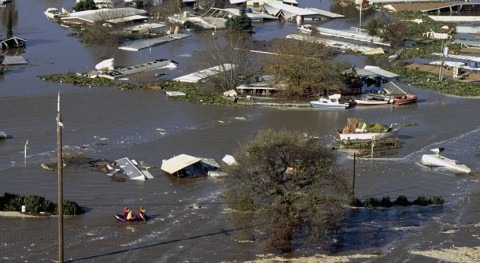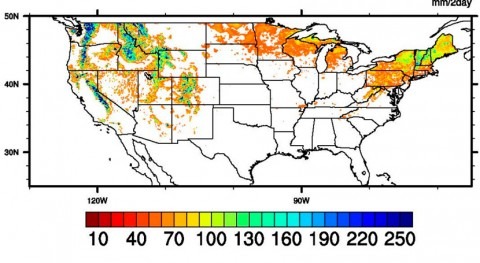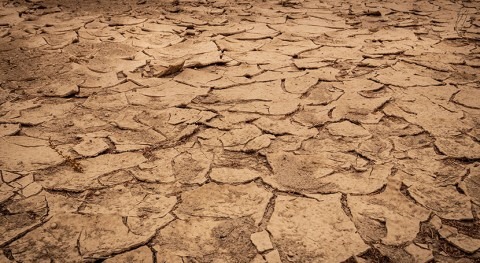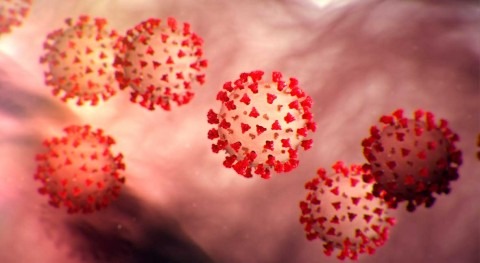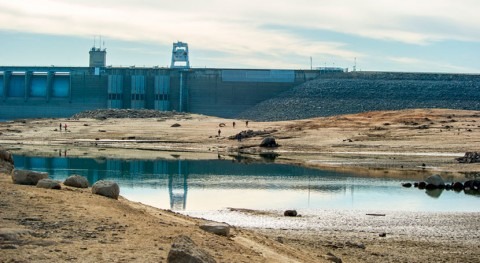While much research has focused on the striking differences in biodiversity between tropical and temperate regions, another, equally dramatic, pattern has gone largely unstudied: the differences in species richness among Earth's three major habitat types—land, oceans and freshwater.
A new study led by ecologists at the University of Arizona reveals the origins of diverse animal and plant species richness in terrestrial, ocean and freshwater habitats at a global scale. It also explores the possible causes of these richness patterns.
Published in the journal Ecology Letters, the study was led by Cristian Román-Palacios, an assistant professor in the UArizona School of Information in the College of Social and Behavioral Sciences, and John J. Wiens, a professor in UArizona Department of Ecology and Evolutionary Biology in the College of Science. It was co-authored by Daniela Moraga-López, a doctoral student at Pontificia Universidad Católica in Santiago, Chile.
"As far as we know, our paper is the first to provide a global analysis of biodiversity by habitat and provide possible explanations as to what might drive the observed patterns," Wiens said.
Despite oceans covering 70% of Earth's surface, about 80% of the plant and animal species are found on land, which accounts for only 28% of Earth's surface. Freshwater habitats cover a minute fraction of Earth's surface, about 2%, but have the highest animal species richness per area, the study revealed.
A new study led by ecologists at the University of Arizona reveals the origins of diverse animal and plant species richness in terrestrial, ocean and freshwater habitats at a global scale
More than 99% of known animal species were included in the analysis, as were all known plant species. The authors estimate that 77% of known living animal species inhabit land, 12% ocean habitats, and 11% freshwater habitats. Among plants, only 2% of species call the ocean home, and a mere 5% live in freshwater.
The authors were also interested in what scientists call phylogenetic diversity, which provides a measure of how closely or distantly related organisms are to each other on the tree of life. When the team looked at phylogenetic diversity per unit area of each habitat type, they found freshwater diversity to be at least twice as high as land and ocean habitat diversity, for both animals and plants.
The high phylogenetic diversity per unit area in freshwater habitats highlights the importance of conserving freshwater ecosystems, Palacios said.
"The large-scale patterns of freshwater community composition resemble the process of creating mosaic art—where many groups in freshwater are like 'pieces' sourced from either land or marine ecosystems," he said. "Therefore, creating additional protections to freshwater habitats could help to efficiently conserve, at once, very divergent groups of animals and plants."
In contrast, animal and plant species in terrestrial habitats tend to represent only a few phyla, or taxonomic groups of organisms. Some examples of phyla include sponges, nematodes, mollusks and chordates—the group that contains vertebrates. This finding led the study authors to conclude that preserving freshwater habitats can protect more species and more evolutionary history than preserving the same amount of area on land or in the ocean.
"Insights into phylogenetic diversity afford us a great opportunity to preserve significant pieces of evolutionary history," Wiens said, adding that the distribution of phyla among habitats helps explain these patterns of phylogenetic diversity.
The researchers found that the observed patterns of species richness are best explained by differences in diversification rates among habitats, which are a measure of how many species originate and accumulate in a given amount of time. In other words, habitats where species proliferate more rapidly have greater biodiversity.
Diversification rates can be dependent on several different factors. But geographic barriers may be the most important for explaining differences in diversification rates among habitats, according to Wiens.
"Species may proliferate more rapidly on land than they do in the ocean or in freshwater because there are many more barriers to dispersal on land compared to the ocean, where organisms can move more freely," he said. "These barriers seem to help drive the origin of new species in all habitats in both plants and animals."
Alternative explanations, such as whether a habitat was colonized earlier or more frequently over time, were not supported.
"We were able to show that generally speaking, the oceans were colonized first, then species moved into freshwater habitats and lastly, onto land," Wiens said. "And that holds true for plants and animals. Therefore, the greater biodiversity of land cannot be explained by an earlier colonization of terrestrial habitats."
Biological productivity—in essence, the growth of plants—which has traditionally been considered one of the major drivers of global biodiversity patterns, turned out to have a much smaller effect than previously thought.
"Overall productivity is similar between the ocean and land, which tells us that at the global scale, productivity is not the most important determinant of biodiversity," Wiens said.
Similarly, area does not appear to be a decisive factor, either, since the oceans have the greatest area but very limited species numbers, Wiens explained.
"We conclude that the rate of species proliferation might be the most important aspect in driving species richness across the planet.







